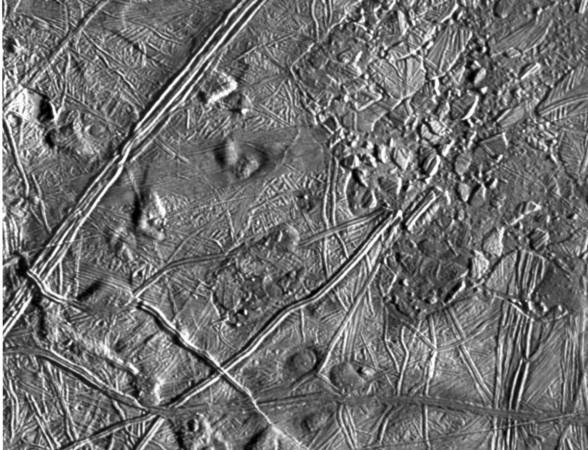
NASA has finally unveiled a plan to hunt alien life on Jupiter's Galilean moon Europa, the space agency said.
Also Read: Researchers have found 10 faint galaxies that kick-started the whole universe!
Astronomers and exobiologists believe that the chances of discovering life on the oceans under the kilometres-thick ice on moons of the gas-giants Jupiter and Saturn, are high. Now, with the help of computer models, scientists are closer to launching a mission that will once-and-for-all let us know if life (even if just microbial) exists under the dense layers of ice on these moons.
NASA's Science Definition Team (SDT) has revealed that a Europa Lander, which is presently under development, is likely to be launched with the Space Launch System by the early 2020s to investigate Europa during a flyby mission.
It would take around five years to reach Jupiter, hence the researchers are expecting the data to be return for analysis by 2031.
Compared to Earth's Moon, Europa is slightly smaller and it is believed that there is an enormous salt-water ocean under its ice surface. This Galilean moon is believed to have a rocky sea surface beneath the crust and this is the key reason researchers are keen to find out more about Europa and its habitability.
"Europa may hold the clues to one of NASA's long standing goals - to determine whether or not we are alone in the universe. The highest-level science goal of the mission presented here is to search for evidence of life on Europa," a NASA statement reported.
Engineers from NASA have begun working on the Europa Lander Mission, as reported by Pref Science.
As Europa has no atmosphere, a team from NASA has devised a way to deliver its payload on to the moon's surface with utilising any technologies like parachutes or heat shields, a Science World Report stated.








